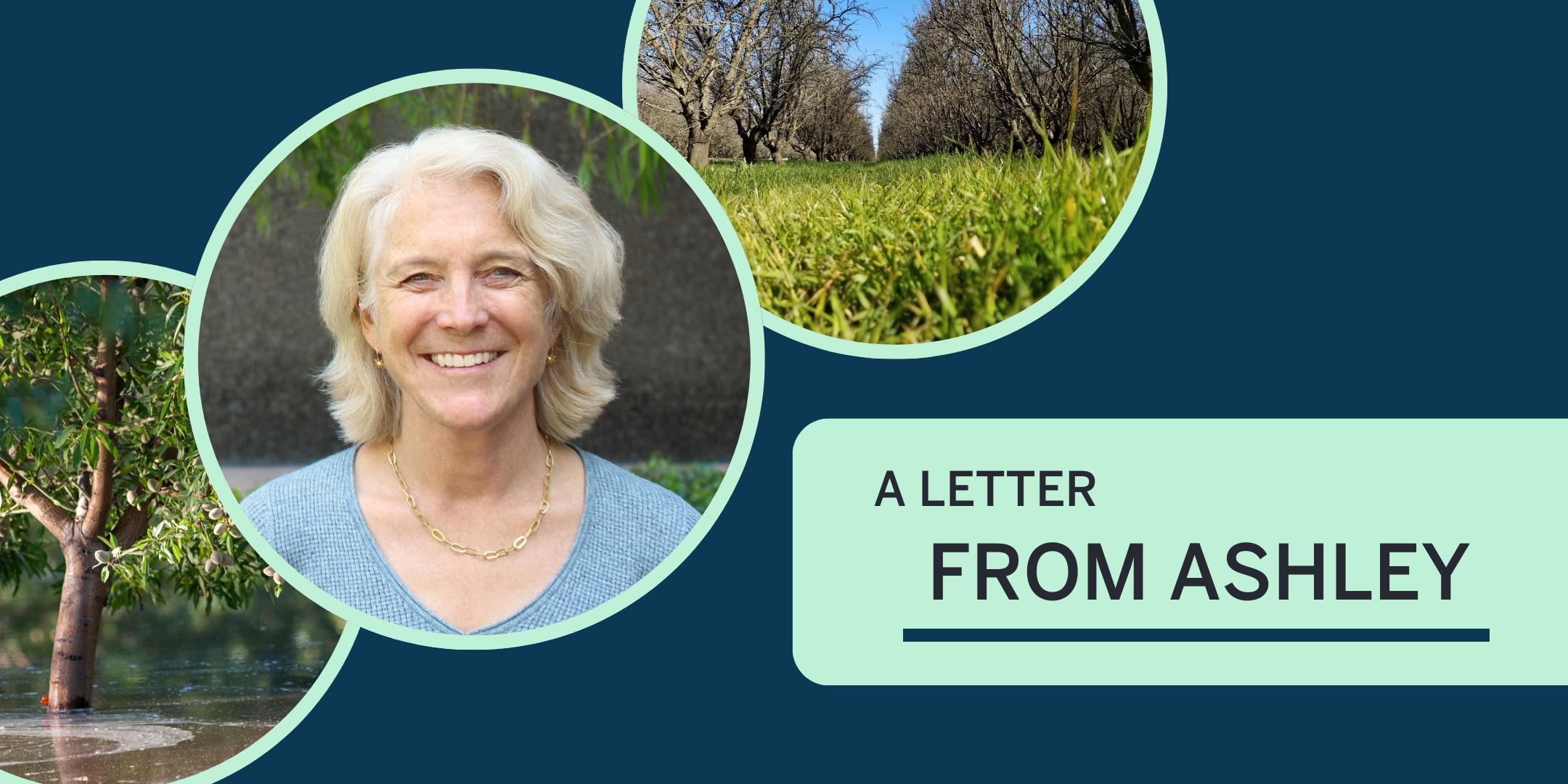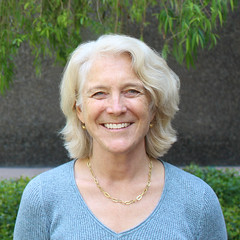
by Christa Harader and Ashley Boren

2025 is a year of big changes at Sustainable Conservation. After 28 years of outstanding leadership, Ashley Boren will transition her role at the end of the year to Sustainable Conservation’s next CEO, who will build on the organization’s accomplishments and take us to the next level of impact.
Ashley is an inspiration to me and countless others. Working with her is a major highlight of my time at Sustainable Conservation over the past 10 years, and I will miss her mentorship and good humor.
Amid this big transition, I sat down with Ashley to talk about what she’s proud of accomplishing with the Sustainable Conservation team, how we came to focus on water, her advice for us to continue succeeding, and what she’s most looking forward to doing in her next chapter.
Did you ever think you’d spend nearly 30 years working for Sustainable Conservation?

No, but then I don’t remember ever looking that far ahead. Also, Sustainable Conservation was quite small when I started with a budget of about half a million dollars and staff of five people or so. In those early years, we were very focused on keeping the lights on and figuring out where we could make a meaningful impact.
I think what’s kept me at Sustainable Conservation for so many years is the tremendous learning opportunity it has been. We’re always taking on new environmental issues so there is always more to learn and that’s been fascinating and fun. And, I have met and gotten to work with and alongside so many wonderful people.
Looking back, what are you most proud of during your time at the organization?
I’m very proud of both what we’ve been able to accomplish and how we’ve accomplished it. We’ve tackled some tough issues and made real progress, from phasing copper out of automotive brake pads to speeding critical habitat restoration with expedited permitting pathways to refilling our critical groundwater aquifers. Collaboration has been key to our success in all these efforts, and I’m equally proud of the trusted partnerships we’ve built with a wide variety of interests.
Why is now the right time for you to step away from Sustainable Conservation?
I have been thinking about this for a while, and now is the right time for me to pass the baton to a CEO who can bring fresh expertise and perspectives to our work.
I want Sustainable Conservation to continue to succeed and thrive, and we are in an excellent position to welcome a new leader. We have very talented and committed staff, an excellent and engaged Board, a strong track record of delivering results, and we are financially sound.
Stepping down at the end of the year also aligns well with our planning. The new CEO will have a full year to get to know the organization before they start our next strategic planning process.
What has been one of your biggest challenges in leading the organization?
Definitely patience. I came from the private sector where things move very fast. When I first arrived at Sustainable Conservation, I was trying to push things to happen more quickly, and I learned that process is important, particularly when you’re collaborating with diverse interests on complex environmental issues. But you also don’t want to get bogged down, so you have to strike the right balance of pushing solutions forward without blowing up the process. There is a saying that “progress moves at the speed of trust,” and I think that is true.
What advice or guidance do you have for Sustainable Conservation as we embark on this next chapter?
I have lots of confidence in Sustainable Conservation’s future. The issues we work on will change, as they should. What I hope does endure are our organizational values of collaboration, respect, honesty, learning, well-being, and results.
Collaboration is pretty obvious – that’s just what Sustainable Conservation does, and it’s in our DNA. Respect for others’ perspectives and acting with honesty and integrity are what make us good collaborators. Regarding learning, I think that our team approaches issues with curiosity and genuine interest in learning from and with our partners, and that’s central to crafting effective solutions. Our work is not easy, so keeping an eye on our team’s well-being is important. And, delivering results and effecting tangible change on the ground is paramount.
Tell me about why the organization chose to focus on water when we did.
Over the years as the organization grew, we worked on a lot of different natural resource issues. We would often get asked what brake pads, manure, invasive plants and permits had to do with each other. And the answer is not a lot! The throughline is our collaborative approach to addressing these issues.
During our 2018 strategic planning process, we decided we could increase our impact by narrowing our focus. Water is a critical issue for California that intersects with many other environmental challenges, and we had experience working on water since our inception. It was a very good decision as it helped our program teams share and leverage information, expertise, and networks.
Why is water so important in California?
We all depend on water. People need safe, clean water to drink. Ecosystems and species need water to function and flourish. Farms need water to grow the food we all depend on. We have a lot of needs to balance as droughts get longer and more intense and we experience bigger storms and floods. We have to get to real, long-term resilience.
What are you excited about for the future?
I’m excited to watch Sustainable Conservation continue to thrive, and to have some more free time. I have not given too much thought to 2026 but I’m sure I’ll be backpacking, hiking and mountain biking. And, I have lots of interests to explore. I’d love to be fluent in Spanish again and I might train to be a California naturalist through UC Cooperative Extension. I’ll also continue to serve on the Boards of California Trout, California Water Data Consortium and Watershed Solutions Network, so I definitely will stay engaged.
We’re so grateful for Ashley’s leadership, and look forward to welcoming our next CEO later this year!
